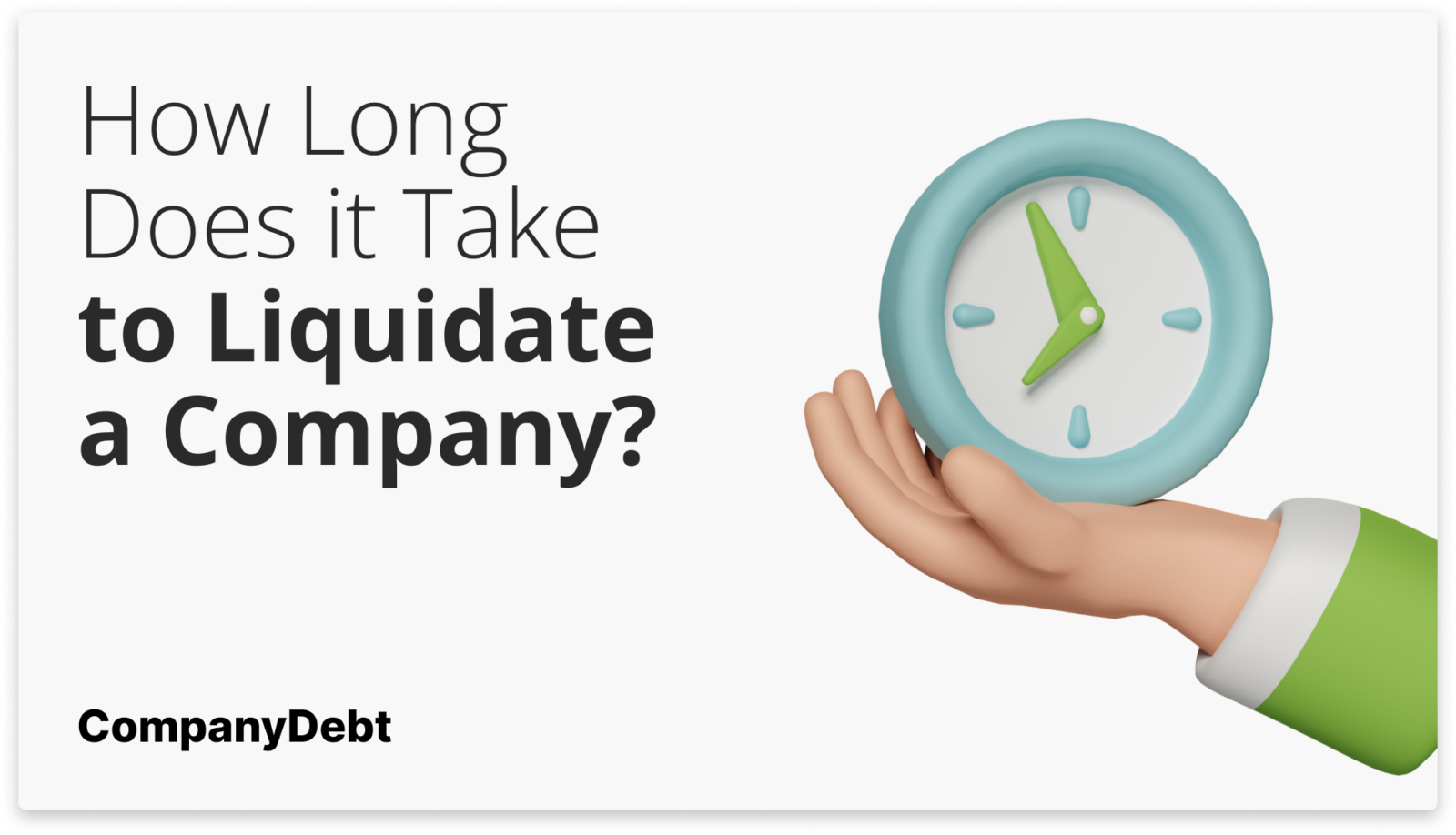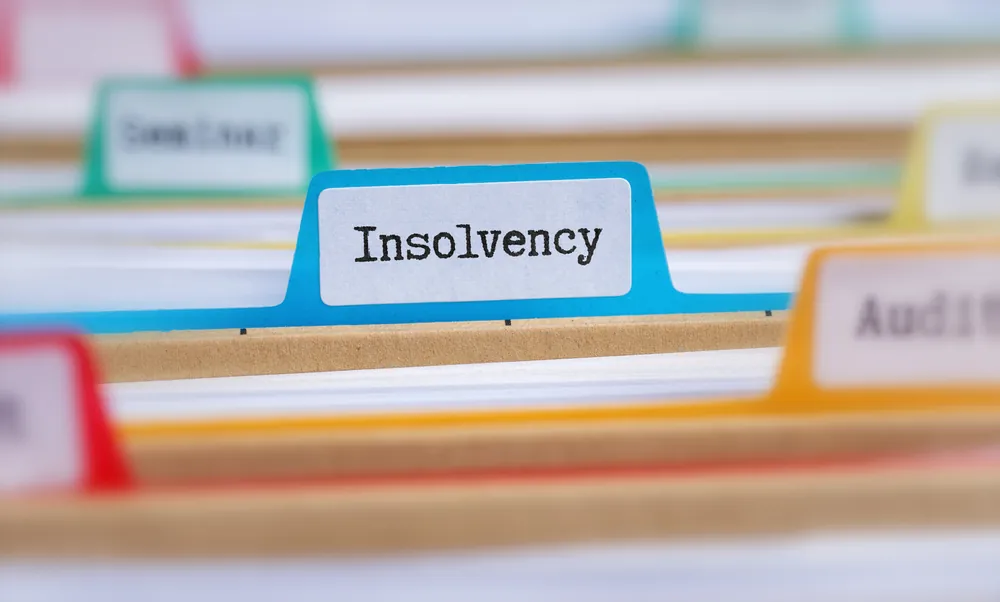
How Long Does it Take to Liquidate a Company?
Insolvent liquidation procedures generally take 12 to 18 months, depending on the complexity of assets and creditor claims, although there is no statutory time limit.
It’s important to note that there are two main types of liquidation: voluntary and compulsory.
Voluntary liquidation is initiated by the company’s directors and shareholders, while compulsory liquidation is initiated by a court order, often due to creditor petitions. The timeline and process can differ between these two types, with voluntary liquidation generally quicker and more straightforward.
I’ll discuss the specific differences in the timeline for each type of liquidation later in this article.
If you’d like to talk through your specific situation, please call 0800 074 6757 or email info@companydebt.com for free and confidential advice from one of our professional advisers.

Average Timeframe for Voluntary Liquidation
| Stage | Typical Duration |
|---|---|
| Initial Decision and Shareholder Resolutions | A few weeks |
| Appointment of Liquidator | A few days to 2 weeks |
| Liquidator’s Review and Asset Realisation | A few months |
| Distribution to Creditors and Shareholders | 6-12 months |
Voluntary liquidation, initiated by the company’s directors and shareholders, typically progresses faster than compulsory liquidation. The process can be divided into several key stages, each with its own expected timeframe.
The first stage involves the initial decision to liquidate and passing the necessary shareholder resolutions. This crucial step usually takes a few weeks as it requires the directors to agree on the course of action and secure the approval of the shareholders.
Once the decision is made, the next step is the appointment of a licensed insolvency practitioner to act as the liquidator. This process generally takes a few days to a couple of weeks, depending on how quickly the necessary formalities are completed.
After the liquidator is appointed, they will undertake a comprehensive review of the company’s assets and liabilities. The time required for this review can vary, typically taking a few months, depending on the complexity of the company’s financial situation. During this stage, the liquidator will also begin the process of realising the company’s assets.
The final major stage is the distribution of funds to creditors and shareholders. Once the assets are sold and funds are realised, the liquidator will distribute these according to the priority of claims. This phase typically takes 6-12 months, but it can be extended if assets are difficult to liquidate or if there are disputes among creditors or shareholders.
In summary, while the voluntary liquidation process is generally quicker than its compulsory counterpart, it can still take a year or more to complete, depending on the specifics of the company’s financial affairs and the efficiency of the process.
Average Timeframe for Compulsory Liquidation
| Stage | Typical Duration |
|---|---|
| Filing of Court Petition and Hearing | Several weeks to a few months |
| Court Decision and Appointment of Official Receiver | Immediate appointment, with handover to liquidator in additional weeks |
| Investigation and Asset Realisation | Several months to a couple of years |
| Distribution to Creditors | A few months |
Compulsory liquidation, often initiated by a court order due to creditor petitions, typically involves a more prolonged process compared to voluntary liquidation. The extended duration is primarily due to the legal procedures and the complexity of investigations involved. Below are the key stages and their typical durations:
The process begins with the filing of a winding-up petition and the court hearing. This initial stage can take anywhere from several weeks to a few months, depending on court schedules and the specifics of the case.
Once the court issues a liquidation order, an Official Receiver is appointed immediately. However, the handover to a liquidator, who will manage the liquidation process, may take additional weeks.
The liquidator then embarks on a thorough investigation of the company’s affairs and begins the asset realisation process. Depending on the complexity of the company’s operations, this phase can last from several months to a couple of years.
The final stage involves the distribution of funds to creditors. Once the assets are realised and creditor claims are processed, this stage typically adds a few more months to the overall timeline.
In summary, compulsory liquidation generally takes between 1 to 2 years. However, in cases involving extensive investigations or difficulties in asset realisation, the process can extend beyond this timeframe.

Common Causes of Delays in the Liquidation Process
While the liquidation process generally follows a predictable timeline, certain factors can lead to delays. Some common causes of delays include:
- Complex ownership structures: If the company has a complicated ownership structure or multiple subsidiaries, it may take longer to untangle the assets and liabilities.
- Disputed debts or assets: If creditors or shareholders disagree about the validity of debts or the ownership of assets, resolving these disputes can prolong the liquidation timeline.
- Difficulty locating assets: If the company’s assets are difficult to locate or if there are concerns about hidden assets, the investigation and asset recovery process can extend the timeline.
- Regulatory or compliance issues: If the company operates in a heavily regulated industry or if there are outstanding compliance issues, addressing these matters can delay the liquidation process.
To mitigate the risk of delays, it’s essential to work with an experienced insolvency practitioner who can anticipate potential challenges and develop strategies to address them proactively.
Here at Company Debt, we offer a free consultation to any directors wishing to gain clarity and guidance on your business situation. Our experts have helped 1000’s of directors navigate financial difficulty with practical advice and support.
FAQs About the Timeline of the Liquidation Process
Can the liquidation process be expedited?
Yes, in some cases, shareholders’ agreement or creditor cooperation can expedite the process, potentially reducing the timeline for liquidation.
What are the key factors affecting the duration of liquidation?
The size and complexity of the company, the efficiency of the liquidator, the number of assets to be realised, and the extent of creditor settlements are major factors influencing the timeline.
Can the liquidation process be completed faster for smaller companies?
Smaller companies often have simpler structures and fewer assets, which can result in a shorter liquidation timeline compared to larger, more complex organisations.
What role does the complexity of a company’s financial records play in the liquidation timeline?
The complexity of financial records can significantly impact the timeline. Companies with well-organized and transparent financial records often experience smoother and faster liquidations.
Is there a way to estimate the expected duration of a liquidation process before initiating it?
While it’s challenging to provide an exact estimate upfront, consulting with a qualified insolvency practitioner can help provide a more accurate timeline based on the company’s specific circumstances.








